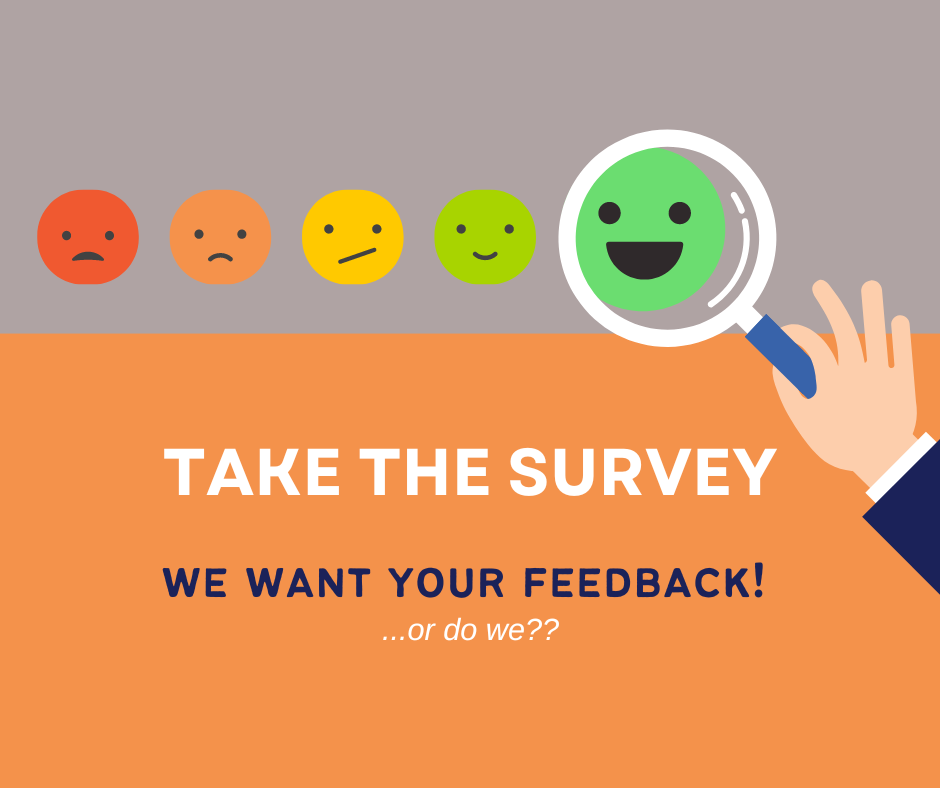Employee Survey Skeptics Might Have a Point

Sometimes I work with clients to create and conduct employee surveys (this is my preference because this affords me better ability to promise employees that their responses are, in fact, anonymous). Sometimes it becomes clear that a key leader (or two) does NOT trust employee survey data. Some leaders focus on questioning or discrediting the validity of the survey tool, some question the analysis, while others reject the whole thing by saying that surveys and other feedback tools often only reflect the perspectives unhappy of people.
Often, reasons like the following serve as the basis for skepticism:
- The recommendations arising out of the data are so impractical, costly, or unfeasible that they can’t support be supported without more, better, or clearer data;
- They prefer a different course of action than those arising from the feedback data; therefore, they discount the feedback to build support for their preferences;
- Fear of what the results say about them as leaders or the organization, especially if they’ve promised to be transparent with the results;
- Philosophical differences that motivate them to discount the process to prove their point (i.e., You will never make everybody happy; thus, this process is a waste of time. So, I will poke as many holes in this information as necessary to justify my decision to not buy-in); and
- Bias toward or contempt for the people involved in the process, including both in-house staff and external professionals.
There may be a modicum of truth in these objections; however, if a leader really wants to sabotage the survey, there are much better ways to do it! By the same token, leaders who want to use surveys and other feedback tools should also be concerned about these “better ways to sabotage ” if they want to be sure they’re getting the best information possible. Consider the following:
- Employee surveys that are conducted only once a year may not reflect changes that occurred throughout the year and may reflect recency bias (Recency bias occurs when someone bases their responses on what has happened most recently rather than over the entire time frame that they’ve been instructed to focus on).
- Surveys that are done sporadically are less useful when trying to determine what the average daily temperature of an organization or team is. Thus, before launching a survey, an organization should decide what they are hoping to gain from a survey and how it factors into its longterm people management plan. Additionally, organizations should ask certain questions on every survey to insure that they are able to make comparisons over time.
Developing your feedback tools with the ability to compare results over time speaks to your organization’s commitment to intentional culture building and employee satisfaction. When you can compare employee sentiment over multiple years, you are better able decide which aspects of your organization’s culture should be preserved or changed. On the other hand, survey design matters just as much, if not moreso, than how you intend to use the data. If the instrument doesn’t yield clear information, you’ll have less confidence in the decisions you make based on it. Frankly, if your saboteur finds these common flaws in your instrument, their concerns are valid.
- Multi-part questions (questions that ask employees to evaluate two or more things at once, i.e., Agree or disagree: The level of communication and the number of meetings we have are sufficient), which can confuse respondents or frustrate them when they want to evaluate the items separately.
- Too many open-ended questions, which will likely yield unclear or confusing results.
- Surveys that take more than 20 – 30 minutes to complete because they require a lot of effort from employees. Not only are you risking a lower response rate, the quality of the responses may also diminish.
Last, but not least, naysayers often gain ground with concerns about employee participation. While it is true that the smaller your organization is, the higher the employee participation rates need to be to have generalizable data, coercing people to participate will probably net you more negative data. This said, two of the main reasons that employees resist surveys is that they don’t trust the organization or believe that the results are truly anonymous. In short, they’re worried about retaliation. If you know that your organization has a climate of distrust, you have to incorporate trust building into your survey process, including communicating about it beforehand. You might be better served by having a third party administer and collect your survey data. Second, employees resist surveys because they don’t believe the information will be acted upon; therefore, they perceive participation as a waste of their time. If you agree with the employees that your organization has dropped the ball in the past and failed to act on their feedback, or failed to communicate how the data was used, you must create a plan that owns those failures and actively seeks their buy-in (using an employee committee to help design it is a great start).
Voluntary employee feedback is never going to be perfect; however, the alternatives, forced feedback or no feedback, are worse. Even more fundamental than formal feedback tools is leadership’s commitment to building a culture that reflects its espoused values and honestly communicating with employees about what those values are.





